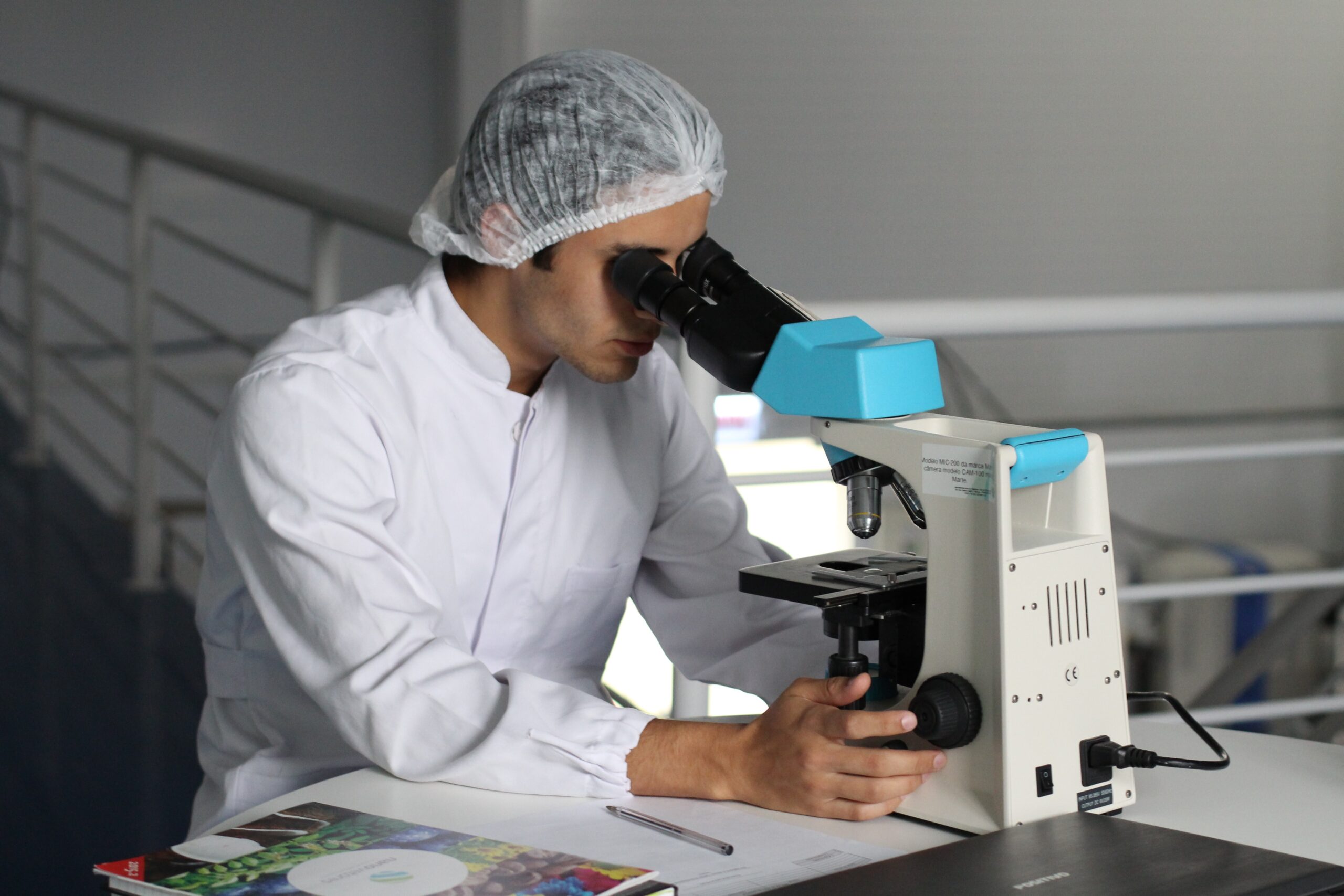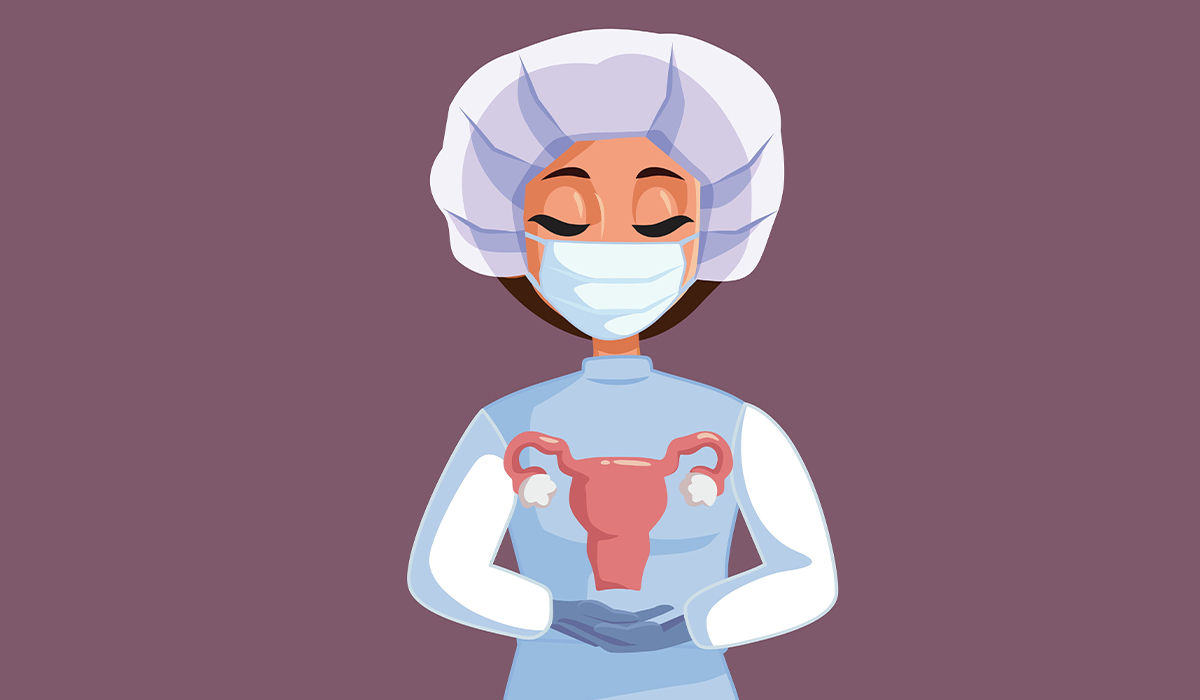Adenomyosis, related to endometriosis, is different. Each one is a different disease with unique outcomes and treatments. Although connected, Adenomyosis is not always present with endometriosis.
Adenomyosis, a type of internal endometriosis, is about misplaced tissue found in the uterus. Normally, lining and epithelial cells reside in the mucosa. However, with adenomyosis, the endometrial tissue sits within the uterus’s muscle layer. You’ll often find this in the region of the uterine body.
During adenomyosis, the endometrium cells, the cells lining the inside of the uterus, penetrate deep into the uterus muscle, forming various pathological changes. We can divide adenomyosis into those located within the genital tract and those occurring outside, such as in the region of the intestines or bladder.
Adenomyosis still has undetermined causes, but they are assumed to remain multifactorial. Women who suffer from endometriosis and adenomyosis may report similar symptoms. Patients then usually mention complaints related to the genitourinary tract. Adenomyosis is currently treated with several methods.

To date, the exact cause of adenomyosis is not known. However, several theories partially explain the causes of the disease. The most popular theory related to the cause of adenomyosis is that the reasons are multifactorial![]() . In addition to it, the following causes are distinguished:
. In addition to it, the following causes are distinguished:
Past trauma to the uterus and surgery – Past trauma to the uterus occurring during childbirth, cesarean section, or after procedures such as uterine calving is often cited as a cause of adenomyosis. So, in this case, the reason is the trauma factor and the developing inflammation![]() . Under natural conditions, the uterus of a healthy person has elements that form a barrier between the myometrial layer and the endometrium. By contrast, trauma can damage the protective barrier and cause excessive ingrowth of the endometrial glands into the myometrial structures.
. Under natural conditions, the uterus of a healthy person has elements that form a barrier between the myometrial layer and the endometrium. By contrast, trauma can damage the protective barrier and cause excessive ingrowth of the endometrial glands into the myometrial structures.
Cellular metaplasia – A different theory of origins assumes cellular metaplasia, when undifferentiated cells of Wolff's or Müller's ducts, i.e., structures of enormous importance in the embryonic development of the reproductive system, give rise to the development of adenomyosis. The metaplastic theory recognizes that endometrial cells are formed by transforming different differentiated tissues.
Improper blood vessel function – This theory explains that endometrial tissue projects to different locations via blood and lymphatic vessels. Improper circulation in the area of the spiral arteries of the uterine muscular membrane can, therefore, cause the development of both adenomyosis and endometriosis.
Improper outflow of menstrual blood – A different theory suggests that retrograde flow of menstrual blood through the fallopian tubes causes cell nesting. Abnormal uterine muscular peristalsis in adenomyosis may be the cause of improper clearance of the reproductive tract during menstruation and the formation of endometrial foci.
Hormonal causes – Prolactin and estrogen levels play a significant role. Adenomyosis is a sex hormone-dependent disease determined by estrogen. Women of childbearing age mainly suffer from it. Therefore, hormonal problems could also be a potential cause. Adenomyosis also produces prolactin, which inhibits apoptosis, the process of cell destruction.
Immune causes – Immune factors are also believed to play a role in the development of adenomyosis. The uterus of a healthy woman has a resistant barrier. The barrier provides mechanical and immunological protection against ascending bacterial infections. The process of adenomyosis occurs when the immune barrier in the uterus is breached.
Genetic causes – Some hypotheses suggest that adenomyosis is due to genetic influences. It is proposed that unknown gene changes might cause adenomyosis. The identification of these crucial genes is still pending. More studies are required, considering the potential that genetics could impact adenomyosis advancement.
Environmental causes – A consequence of the development of societies is the emergence of diseases of civilization and the occurrence of new environmental hazards. Ecological factors include stress, unhealthy food, use of stimulants, and environmental pollution, among others. The development of adenomyosis is mainly influenced by smoking![]() and physical inactivity.
and physical inactivity.

Adenomyosis is a condition that impacts women, linked to the female reproductive system. Different risk elements enhance adenomyosis chances. The ailment is frequent in distinct age brackets, yet it can occur at various ages. Childbirth and reproductive system procedures also intensify the risk. Hence, potential risk factors encompass:
Reproductive age – Adenomyosis mainly affects women of reproductive age, especially after the age of 34![]() . Teenage girls are rarely diagnosed with the classic type of the disease. In postmenopausal women, on the other hand, outbreaks of adenomyosis naturally disappear because the ovaries no longer produce the hormones that determine them. However, it does not mean that adenomyosis does not occur in both groups. Young women usually face cystic adenomyosis of the uterus, which is a specific variant of the disease.
. Teenage girls are rarely diagnosed with the classic type of the disease. In postmenopausal women, on the other hand, outbreaks of adenomyosis naturally disappear because the ovaries no longer produce the hormones that determine them. However, it does not mean that adenomyosis does not occur in both groups. Young women usually face cystic adenomyosis of the uterus, which is a specific variant of the disease.
Childbirth – Women who have undergone several deliveries suffer from adenomyosis. Pregnancy![]() increases the risk of the disease because the hormonal environment of pregnancy promotes the development of islands of ectopic endometrium, and it is possible that adenomyotic tissue has a higher ratio of oestrogen receptors. Also, in women with adenomyosis, subsequent pregnancy may be more difficult. The disease does not preclude pregnancy by natural means, although it may be much more difficult in such a situation, and miscarriages may occur more frequently.
increases the risk of the disease because the hormonal environment of pregnancy promotes the development of islands of ectopic endometrium, and it is possible that adenomyotic tissue has a higher ratio of oestrogen receptors. Also, in women with adenomyosis, subsequent pregnancy may be more difficult. The disease does not preclude pregnancy by natural means, although it may be much more difficult in such a situation, and miscarriages may occur more frequently.
Surgical procedures – The development of adenomyosis may be influenced by prior uterine surgery![]() . It has been noted in studies that surgical disruption of the endometrial and myometrial borders increases the risk of adenomyosis. Also, patients who underwent a procedure to terminate the pregnancy by dilating and cicatrizing the uterine cavity and those who experienced a cesarean section had a higher incidence of adenomyosis than women who did not end the pregnancy.
. It has been noted in studies that surgical disruption of the endometrial and myometrial borders increases the risk of adenomyosis. Also, patients who underwent a procedure to terminate the pregnancy by dilating and cicatrizing the uterine cavity and those who experienced a cesarean section had a higher incidence of adenomyosis than women who did not end the pregnancy.
Ectopic pregnancy – Adenomyosis connects to a higher chance of ectopic pregnancy![]() in women. This type of pregnancy boosts the prospective development of adenomyosis. Observations show cigarette-smoking women carry an ectopic pregnancy risk too. Consequently, adenomyosis may pave the way for an intramural ectopic pregnancy.
in women. This type of pregnancy boosts the prospective development of adenomyosis. Observations show cigarette-smoking women carry an ectopic pregnancy risk too. Consequently, adenomyosis may pave the way for an intramural ectopic pregnancy.
Smoking – As mentioned earlier, the development of adenomyosis is also affected by smoking tobacco cigarettes. According to some studies, compared to women who have never smoked, smokers appear to be less prone to adenomyosis. It is related to hormonal mechanisms. Reduced serum estrogen levels have been reported in women who smoke, and adenomyosis is highly related to hormonal factors.
Depression – The presence of depression and more frequent use of antidepressants![]() increases the likelihood of adenomyosis. This association may be due to abnormalities in prolactin dynamics. In addition, it has also been noted that depression may share a common pathogenetic factor with adenomyosis, which is inflammation.
increases the likelihood of adenomyosis. This association may be due to abnormalities in prolactin dynamics. In addition, it has also been noted that depression may share a common pathogenetic factor with adenomyosis, which is inflammation.
Tamoxifen therapy – Post-menopausal women rarely suffer from adenomyosis, but it has been noted that the disease is more common in women treated for breast cancer![]() . It may be related to tamoxifen, a drug used to treat breast cancer. Therefore, adenomyosis may occur more often than is commonly thought in women taking tamoxifen and may be the cause of postmenopausal bleeding in these patients.
. It may be related to tamoxifen, a drug used to treat breast cancer. Therefore, adenomyosis may occur more often than is commonly thought in women taking tamoxifen and may be the cause of postmenopausal bleeding in these patients.

Adenomyosis may not show any signs, making early detection challenging. Yet, certain symptoms only found with adenomyosis may lead a woman to consider a diagnosis. Some signs of adenomyosis are:

Painful menstrual periods – The primary sign of adenomyosis is severe period discomfort. Usually, experiencing cramps in the lower belly during your menstrual cycle doesn't mean something's wrong. However, in the course of adenomyosis, the pain is very intense and persistent. Sometimes, the pain accompanies women throughout the menstrual cycle. Pain can also spread and radiate to other parts of the body, including the back or lower extremities.
Abnormal menstrual bleeding – In adenomyosis, there is an increased abundance of menstrual bleeding and bleeding between periods. Increased duration of menstruation is also noted. Abnormal menstrual bleeding of the type of heavy, prolonged menstrual bleeding or menstrual bleeding occurring at irregular intervals unrelated to menstruation may occur. Menstrual bleeding can then last up to two weeks, and the increased blood loss is reflected in the patient's morphology in the type of anemia.
Pain during intercourse – In the course of adenomyosis, there may also be pain during intercourse. Adenomyosis is very often accompanied by pain that prevents sex. Penetration is so painful that it slowly causes a loss of interest in this sphere of life. Pain can also be caused by vaginal dryness and other factors, so it is necessary to investigate the cause if this symptom arises thoroughly.
Pain during urination with blood – In the situation of localization of adenomyosis foci outside the uterus, the complaints reported by the patient concern the involved structures, such as the bladder or bowels. Many patients experience hematuria, especially during menstruation. There may also be frequent urination, bladder pressure, and pain during urination.
The course of adenomyosis is variable individually, and the disease can have various facets. Sometimes, adenomyosis runs without symptoms, and the woman is unaware of the problem. Then, the diagnosis is difficult. However, if there are alarming symptoms, the issue of adenomyosis should not be delayed and mostly go to a gynecologist. After taking a medical history and conducting tests, adenomyosis can be detected. Such tests include:

Gynecological examination – The basis is an internal examination, which will confirm the presence of a complex, enlarged uterus and pain on palpation during the perimenstrual period. It is worth remembering that the absence of the above complaints on examination does not mean that adenomyosis is not developing.
Ultrasound – When in doubt, an ultrasound should be performed to identify the foci. The uterine corpus then assumes a patchy type. On both physical examination and ultrasound, it can be seen that the uterus in adenomyosis is enlarged and takes on a characteristic spherical shape. When imaging with ultrasound, the structure of the various layers of the organ wall can also be assessed.
Magnetic resonance imaging – In addition to ultrasound, magnetic resonance imaging, a technique for imaging tissues and organs using a magnetic field, is also used to diagnose adenomyosis. In rare cases, MRI is a diagnostic tool to visualize the border between the endometrium and myometrium.
Histopathological examination – The image of adenomyosis, which is visible on histopathological examination under a microscope, consists of an endometrial part, in which there are glands and lining resembling the endometrium, and a myometrial part, i.e., smooth muscle fibers. The two fragments interact, with the mucosa's glands and connective tissue penetrating between the uterine muscle fibers' bundles.
Adenomyosis can significantly disrupt women's daily and occupational activities. Therefore, it is essential to implement treatment that will alleviate unpleasant symptoms. Adenomyosis therapy aims to inhibit the destruction of the endometrium and improve the comfort of patients' lives. The treatment of adenomyosis depends on several factors, among which the most important are the patient's age and her procreative plans. The following treatments for adenomyosis are possible:

Pharmacological treatments that inhibit endometrial function are attempted in women. Adenomyosis therapy has the goal of making patients more comfortable through the use of drugs with anti-inflammatory and analgesic effects. It is also possible to stop the development of ectopic endometrial foci with hormonal treatment. For this goal, hormonal contraception is used.
An extensive range of drugs is used in the pharmacotherapy of adenomyosis from the group of selective progesterone receptor modulators or progestogens. Intrauterine IUDs with hormonal agents are also an alternative to pills or vaginal discs. In the absence of the expected response to first-line treatment, more advanced pharmacotherapy with drugs from the group of GnRH analogs, which have the effect of turning off the hypothalamic axis, is proposed.
The inclusion of selective serotonin reuptake inhibitors![]() , used in the treatment of psychiatric disorders, may also be considered in cases of severe complaints. Pharmacotherapy is the treatment of choice for infertility patients and women who, for various reasons, do not accept surgical methods or have medical contraindications to them.
, used in the treatment of psychiatric disorders, may also be considered in cases of severe complaints. Pharmacotherapy is the treatment of choice for infertility patients and women who, for various reasons, do not accept surgical methods or have medical contraindications to them.

The next stage of treatment, in the absence of the expected results of previous pharmacotherapy, is diagnostic and surgical treatment by hysteroscopy. Research and practice confirm that in some instances, performing laparoscopy, releasing adhesions, unblocking fallopian tubes, and using hysteroscopy reduces pain and prevents miscarriages.
The surgical treatment method of first choice should always be minimally invasive techniques. There are many methods of alleviating the discomfort resulting from the disease, but the definitive and most effective method of treating adenomyosis remains surgical removal of the uterus or hysterectomy.
Due to the radical nature of the procedure, surgery is offered only to women in whom pharmacological methods do not work and where increased pain makes daily functioning difficult or even impossible. Surgical treatment is a favorable option for patients with chronic pelvic pain if they are struggling with infertility in the course of endometriosis and endometrial cysts.

Diet or treatment of adenomyosis with herbs, which is sometimes recommended by alternative medicine, is not scientifically justified in the treatment of the disease. Diet cannot be used as the primary treatment for the disease. However, it is advisable to use unprocessed foods, fruits and vegetables, and iron-rich products when suffering from it. It is also recommended to avoid caffeine, trans-fats, and alcohol. Casem is the use of physical therapy and rehabilitation treatments. Appropriate physical activity is also essential.
Adenomyosis is one of the most important causes of disability and reduced quality of life for women, including teenage girls. It is often accompanied by chronic pain and difficulty getting pregnant, which can result in lowered mood and mental crisis. In addition to this, adenomyosis can cause infertility and pregnancy problems. Rarely, adenomyosis causes cancer.
Infertility is defined by the WHO (World Health Organisation) as the inability to become pregnant for a period of at least 12 months![]() , despite regular sexual intercourse and without using any contraceptives. Infertility is considered a temporary condition that can be treated with great effectiveness. Infertility, on the other hand, is an irreversible condition.
, despite regular sexual intercourse and without using any contraceptives. Infertility is considered a temporary condition that can be treated with great effectiveness. Infertility, on the other hand, is an irreversible condition.
Adenomyosis can hinder pregnancy but does not prevent it. The disease usually affects women of late reproductive age who have already given birth, less often younger patients. Adenomyosis can cause infertility, as it impedes implantation of the embryo in the uterus. In addition, during the disease, the transition zone in the uterine muscular membrane is disrupted.
Adenomyotic glands produce pro-inflammatory compounds that enter the uterine cavity and fallopian tubes. It, in turn, can significantly impede sperm transport to the egg and the entire process involved in fertilization. The changes that occur as a result of it can reduce the ability of the uterus to create the right conditions for the development and implantation of the embryo.

Adenomyosis is not a contraindication to subsequent pregnancy. However, the condition can significantly interfere with pregnancy, especially where its outbreaks are extensive. Patients with adenomyosis may report difficulty getting pregnant or report past miscarriages![]() . Pregnancy in a woman with adenomyosis is, therefore, a high-risk pregnancy. In such a pregnancy, bleeding and spotting from the genital tract and lower abdominal pain are common. Pregnant women with adenomyosis have an increased risk of:
. Pregnancy in a woman with adenomyosis is, therefore, a high-risk pregnancy. In such a pregnancy, bleeding and spotting from the genital tract and lower abdominal pain are common. Pregnant women with adenomyosis have an increased risk of:
Miscarriages – Miscarriage means a pregnancy is lost before the 22nd week. A pregnancy lost after this period is called a premature birth. However, it is essential to be aware that miscarriage does not close off the possibility of trying again for an offspring and giving birth to a healthy baby. In the case of adenomyosis, the disease affects both miscarriage after natural conception and miscarriage after an in vitro fertilization procedure.
Preterm labor – Preterm labor is the termination of pregnancy after the completed 22nd week and before the completed 37th week, regardless of the baby's birth weight. Preterm labor and associated prematurity are a leading cause of neonatal death and morbidity. The earlier the child is born, the greater the risk of complications. Premature babies usually require specialized care, and their health problems are due to the immaturity of the body. They may be concerned about neurological and respiratory disorders and gastrointestinal complications.
Pre-eclampsia – Pre-eclampsia is a severe obstetric complication. It is one of the leading causes of mortality in pregnant women. It is a syndrome of medical symptoms occurring after the 20th week of pregnancy and during labor or postpartum due to high blood pressure. Pre-eclampsia is referred to as pregnancy-induced hypertension accompanied by proteinuria. The symptoms accompanying pre-eclampsia can be various, as can their severity. Lack of treatment is linked to the risk of liver rupture, stroke, and consequent death of the pregnant woman.
Fetal growth abnormalities – Intrauterine fetal growth retardation is a situation in which the fetus grows abnormally in the womb and is consequently more minor than the expected gestational age. Ultrasound monitoring of intrauterine growth is one of the most important components of prenatal care. Currently, there is no effective treatment for IUGR once it is diagnosed. Therefore, it seems reasonable to use preventive measures in the pre-conceptional period and at the beginning of pregnancy.
Abnormal fetal position – Throughout pregnancy, the fetus can assume various positions and it is not an anomaly. At 38 weeks of pregnancy, most often, the fetus takes the position in which it will be born. Under the influence of various factors, it can arrange itself incorrectly. It always carries a great danger for both the mother and the fetus. The baby's positioning is critical so the birth can occur without complications. The correct one is the longitudinal head position. The longitudinal pelvic position, on the other hand, can cause severe complications during labor.
Postpartum hemorrhage – Postpartum hemorrhage is associated with the loss of a large amount of blood. Admittedly, the loss of a certain small amount of blood during and after childbirth is a perfectly natural phenomenon. However, with time after the birth of the child, the amount of secretion coming out of the genital tract gradually decreases until the woman stops bleeding completely. This happens under normal conditions; however, there can also be a serious, often life-threatening problem, which is postpartum hemorrhage.

Adenomyosis is harmless, yet remember some signs might not suggest it, but actually pinpoint to endometrial cancer![]() . This involves unusual, painful bleeding, common in adenomyosis cases. Often, endometrial cancer comes with both endometriosis and adenomyosis.
. This involves unusual, painful bleeding, common in adenomyosis cases. Often, endometrial cancer comes with both endometriosis and adenomyosis.
Depending on the stage and mention type, the way to treat endometrial tumors varies. Among all gynecological cancers, endometrial cancer has the best prognosis. The most dangerous complication of endometrial cancer is metastasis, which usually occurs first in the lungs, liver, and bones. Therefore, with this cancer, a chest X-ray is often ordered to detect metastases in the lungs. If disseminated cancer is suspected, then a CT scan or MRI should be performed.
Adenomyosis is akin to endometriosis but resides in the uterine muscle. This disease hampers fertility in women, complicates chances of getting pregnant, and ups the probability of pregnancy loss. Addressing it swiftly with the right treatment is necessary.
The root of adenomyosis isn't completely known. Supposedly, past trauma to the uterus could be a culprit. Apart from that, hormonal, genetic, and immune factors might be involved too. Adenomyosis can grow in a woman's body without causing any signs. This stealth trait makes early spotting tough.
When certain symptoms show up, it's smart to look closer for this condition. Adenomyosis isn't the same for everyone and can look different from one person to another. The disease often shows itself through intense, hard-to-handle periods. Treatment varies with how far the adenomyosis has advanced and the level of discomfort the woman is experiencing.
Table of Contents

Endometriosis is a long-term condition that can have a significant impact on your life. Learn how to recognise it and… read more »

A miscarriage, or spontaneous abortion, is the loss of a pregnancy before the fetus can survive outside the womb, typically… read more »

Ovarian cysts are among the most common changes in the reproductive organs of women regardless of their age. Are they… read more »

Ovulation is a key stage of the menstrual cycle in which the mature egg moves into the fallopian tube. What… read more »

Pelvic pain implies inconvenience within the lower region of the stomach, underneath the stomach button, and between the hips. This… read more »

Pregnancy is an exceptional time in a woman's life. The key to the proper course of pregnancy is knowledge of… read more »

A gynecologist is a medical doctor who specializes in the health of the female reproductive system, which includes the uterus,… read more »

Menopause is the time when a woman's body gradually changes from a fertile to infertile state. It is accompanied by… read more »

Do you know what pregnancy symptoms appear early? Hormonal changes can cause various symptoms of pregnancy. Find out what signals… read more »